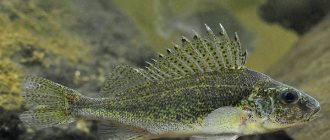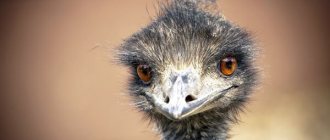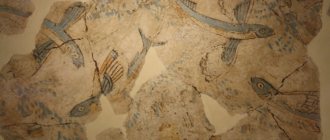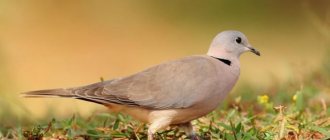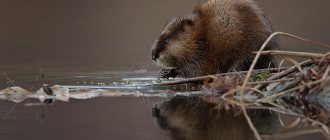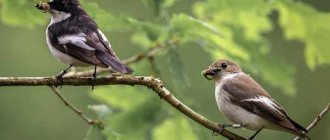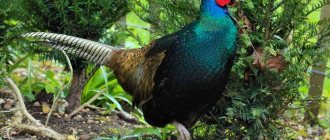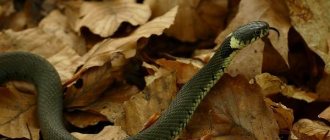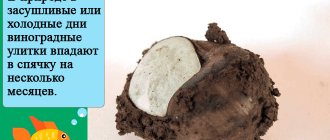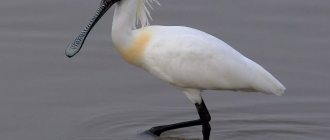Description and features
The body of a mollusk consists of visible parts: a shell and a body, in which a head with tentacles and a leg are distinguished. A special mantle serves as protection for internal organs hidden in the shell. Some folds can be seen on the outside.
The diameter of the spiral-shaped shell is 3.5-5.5 cm. The rounded, swollen shape allows you to completely hide the body if necessary. The shell is twisted to the right with 4.5 turns. The lower circle serves as a wide base.
The color of the shell is predominantly yellow-brown, less often dark gray; some whorls have dark and light grooves. The saturation of the color scheme depends on the climatic factor and the diet of the mollusk. The variability of the cover is associated with the natural camouflage of snails.
The ribbed surface of the right-handed shell is noteworthy. Due to the structural features, the strength indicator increases and more moisture accumulates for life support.
The leg of an adult mollusk can stretch up to 9 cm, although in its normal state the length is from 3 to 5 cm. A soft body with increased elasticity. Thick wrinkles with quadrangular grooves between them effectively retain moisture.
The structure of the grape snail
A pair of tentacles on the snail's head are located above the mouth opening. The tentacles are very active, changing position to an angle greater than the unfolded one. High sensitivity is manifested in the reaction to light, the slightest touch - they instantly hide deep into the house.
The lower ones, labial, 2.5-4.5 mm long, are associated with the sense of smell. On the top are the organs of vision. The length of the eye pair of tentacles is 10-20 mm. The snail distinguishes the intensity of light, sees objects at a distance of up to 1 cm. The mollusk does not distinguish the color range.
Snail breathing is pulmonary. In the folds of the mantle there is a hole that seems to be closed on average once a minute. Respiration activity depends on carbon dioxide in the air and humidity levels.
An interesting feature of grape snails is the ability to restore lost body parts. Partial loss of head or tentacles is not fatal - the animal will grow them back in 2-4 weeks.
Grape snail: description
Adults have a shell with a diameter of up to 4 and a half centimeters, and the volume of this shell is quite sufficient for the snail itself to fit in it. The shell has a spiral shape, bent in 4 and a half turns. The basic color of the shell can vary from yellowish-brown to brownish-white.
Along the circumference of the spiral, up to 3 turns, there are dark and light stripes in the amount of 5 pieces. The main color depends on factors such as the nature of the soil, climatic conditions, diet, and the presence of light.
Interesting to know! The grape snail shell has one unique feature: its surface is ribbed, which increases its surface area, thereby increasing its strength.
Despite the fact that the leg length of an adult is about 5 cm, it can easily stretch up to 9 centimeters in length. The body of the grape snail is characterized by increased elasticity, and its color can range from brownish to dark gray tones.
The surface of the body is covered with many wrinkles, which form many small quadrangles. This structure of the body surface allows this representative of the helicid family to effectively retain moisture.
Above the mouth opening there is a pair of tentacles, the length of which can vary. The labial or olfactory tentacles have a length from 2.5 to 4.5 cm, and the length of the eye tentacles is about 2 times less. With the help of its eyes, the snail can determine the intensity of light, as well as see various objects at a distance of no more than 1 cm.
The grape snail, like many other representatives of this class of Gastropods, has a digestive system consisting of an ectodermal foregut and an endodermal midgut. The breathing process is carried out by the lungs. Above the hindgut is the heart, which consists of the left atrium, ventricle and pericardium. The snail's blood is colorless. The reproductive system is hermaphrodite and in order to obtain offspring from a snail, it is necessary to carry out cross-fertilization. As a result, each adult can lay eggs.
Grape snail and interesting facts about it
Character and lifestyle
During the daytime, when it is warm outside and there is a lot of sunshine, these snails prefer to be in the shade, and the place should be quite humid. Therefore, they can be seen in various cracks or recesses where the rays of the sun do not reach. After sunset, grape snails leave secluded places and their vigorous life activity begins, aimed at searching for food.
Central European snails hibernate twice a year, finding themselves in a state of torpor. As a rule, this happens in winter and summer. At this moment, the snail's body is inside the shell. This moment comes when it is either too cold or very hot outside. While in a state of torpor, the snail abundantly secretes mucus, which reliably protects the snail from negative factors.
How long do grape snails live?
Grape snails, when kept at home and given proper care, can live for about 8 years. Despite these data, the life expectancy of an individual was recorded in Sweden, which was 3 decades.
Habitat
The natural habitat of grape snails is associated with mountainous terrain, valleys, forest edges, park areas, ravines, meadows overgrown with shrubs, and vineyards. It is very important that the soil is alkaline.
In the summer, when it is dry and hot outside, these snails can hide under stones, in the shade of various vegetation, and they can burrow into damp moss, where it is also cool. Having temperatures that are too low or too high causes snails to hibernate.
Interesting moment! When snails hibernate, it happens on the scale of numerous colonies. During the period of torpor, snails lose up to 10 percent of their weight.
As observations show, most of the life of snails is spent in a state of hibernation. These living beings spend about 5 months a year in a state of wakefulness. As a rule, they wake up with the onset of spring. Before plunging into hibernation, snails form separate groups and occupy places for themselves under stones, as well as under fallen leaves.
In the summer, before sunrise, snails are fixed on the stem part of the vegetation, where they wait out the heat of the day. In those places where such snails have visited, traces of mucus remain. The snail, secreting liquid in the form of mucus, moves quite smoothly over any surface. Mucus also protects the snail's body from various mechanical damage.
Lifestyle and habitat
The spread of gastropods occurred throughout almost all of Europe. Valleys, lawns, edges, overgrown ravines, city parks, gardens are a comfortable habitat for these unpretentious creatures.
The active state of grape snails lasts from the first sunny days of spring until the autumn cold. Seasonal wakefulness of mollusks does not exceed 5 months. Moisture-loving animals are often found among stones, in the shade of bushes, and burrow into damp moss.
During the day, during dry times, they are motionless, hiding in places where moisture is better preserved. They sit in shells covered with a thin film to prevent evaporation. As if glued to trunks or branches, they wait out the midday heat. Heat, like cold, numbs snails.
Night time and damp weather awaken snails to search for food. The mollusk gets out of its hiding place and hits the road. The muscular leg carries the cochlea due to muscle contraction and secreted mucus, which softens friction.
The surface on which the mollusk crawls can be horizontal, vertical, or located at any angle. The grape snail pushes off from the support and glides at a speed of up to 7 cm per minute.
There are many natural enemies of the snail. It is a delicacy for all reptiles, hedgehogs, and moles. Some beetles crawl inside the mollusk through the breathing hole. With the arrival of autumn cold, the snail buries itself in the ground with its mouth raised for hibernation.
This arrangement protects against bacteria, retains a small layer of air, and allows you to quickly get out of the shelter in high water. The period of suspended animation lasts approximately 3 months. The animal digs a hole with its muscular leg. Depending on the density of the soil, the dug channel reaches 6 - 30 cm. If the rocky soil does not give way, the snail finds refuge under the autumn leaves.
The mollusk covers the mouth of the shell with a special mucous veil. After hardening, the lime layer becomes a reliable lid. The thickness of the cork varies, depending on the severity of the winter. Air enters through a small hole.
You can notice gas exchange by bubbles when the mollusk is immersed in water. Gastropods spend the wintering period alone, but sometimes gather in entire colonies. During wintering, the grape snail loses up to 10% of its weight.
In the spring, after awakening, the recovery period begins. Animal lovers are engaged in keeping and breeding shellfish. Although there are bans on their import into certain countries, interest in snails does not fade.
Type Shellfish
The body of mollusks consists of three sections: the head
(absent in bivalves),
legs and torso
.
The mantle extends from the base of the body
, between the mantle and the body there is a mantle cavity.
The mantle deposits a mineral shell
(exoskeleton) outward from itself.
The body is bilaterally symmetrical
, unsegmented.
The body cavity is secondary
(coelom).
They live in water, except for some gastropods. Breathe
With gills, terrestrial gastropods breathe with the lung (the inner wall of the mantle).
The circulatory system is not closed (except for cephalopods).
Development
in cephalopods it is direct, in bivalves it is indirect (there is a larva), and in gastropods it is direct in terrestrial forms, and indirect in aquatic forms.
Classes
Bivalve
– freshwater: toothless, pearl barley, marine: mussel, oyster. The sink consists of two doors. They feed by filtering water.
Gastropods - terrestrial: grape snail, naked slug, aquatic: large pond snail, coil. They feed by scraping plant cells with a grater (radula)
.
Cephalopods
– octopuses, cuttlefish. Predators, tearing apart prey with a chitinous “beak”, have a well-developed nervous system.
You can also read
DETAILED SUMMARY: Mollusks, Classes of type Mollusks
ASSIGNMENTS OF PART 2 OF THE USE ON THIS TOPIC
Part 1 tasks
How do gastropods feed?
1) crush large prey with a horny beak 2) watch for prey, hiding among stones 3) filter water, retaining organic residues 4) scrape leaves and stems of plants with the teeth of the tongue
Answer
4
Choose one, the most correct option. Which animals have an open circulatory system?
1) round and flatworms 2) mollusks and arthropods 3) annelids and skullless worms 4) cartilaginous and bony fish
Answer
2
Choose one, the most correct option. Mollusks have the most developed nervous system and sensory organs
1) gastropods 2) bivalves 3) cephalopods 4) elasmobranchs
Answer
3
Choose one, the most correct option. The gastropods include
1) octopus 2) squid 3) pearl barley 4) small pond snail
Answer
4
CELINARITY - MOLLUSCS Establish a correspondence between the characteristics and the type of animals for which it is characteristic: 1) Coelenterates, 2) Molluscs. Write numbers 1 and 2 in the order corresponding to the letters.
A) diffuse nervous system B) no circulatory system C) radial symmetry D) usually have an internal or external skeleton E) a secondary body cavity E) breathe over the entire surface of the body
Answer
111221
FLAT - MOLLUSCS Establish a correspondence between the structural features and organisms: 1) White planaria, 2) Pearl barley. Write numbers 1 and 2 in the order corresponding to the letters.
A) has siphons for filtering water B) has a circulatory system C) has eyes D) a stem-type nervous system E) breathes with gills E) breathes over the entire surface of the body
Answer
221121
ANNELA - MOLLUSCS 1. Establish a correspondence between the animal’s characteristic and the type: 1) annelids, 2) mollusks.
A) the circulatory system is closed B) there is a heart divided into sections C) there is a mantle D) the nervous system is an abdominal nerve chain with nodes in the segments of the body E) the body is segmented
Answer
12211
2. Establish a correspondence between the animal’s characteristic and the type for which this characteristic is characteristic: 1) annelids, 2) mollusks
A) the body consists of a head, torso and legs or torso and legs B) nervous system of the scattered-nodular type C) closed circulatory system D) segmented body E) most have a specific organ in the pharynx - the radula, or grater E) coelomic sacs ( secondary body cavity) are present only in a small area
Answer
221122
3. Establish a correspondence between the characteristics and types of animals: 1) annelids, 2) mollusks. Write numbers 1 and 2 in the order corresponding to the letters.
A) the body contains a trunk and a leg B) have a mantle cavity C) pulmonary or gill respiration D) the circulatory system is closed E) the body is segmented E) do not have a formed heart
Answer
222111
ARTHROPODS - MOLLUSCS Establish a correspondence between the characteristics and types of animals: 1) Molluscs 2) Arthropods. Write numbers 1 and 2 in the order corresponding to the letters.
A) The heart is divided into one or more atria and a ventricle. B) The skeleton consists of chitin. C) The body of most animals is protected by a shell. D) Body growth is accompanied by molting. D) Gills are located in the mantle cavity
Answer
12121
Establish a correspondence between the characteristics of adult animals and their larvae shown in the pictures. Write numbers 1 and 2 in the order corresponding to the letters.
A) filtration nutrition B) mantle cavity C) muscular leg D) articulated limbs E) compound eyes E) body segmentation
Answer
111222
ARTHROPODS - REPRESENTATIVES OF MOLLUSKS Establish a correspondence between the example of an animal and the type to which it belongs: 1) arthropods, 2) mollusks.
A) squid B) barley C) mite D) woodlice D) aphid E) coil
Answer
221112
TYPE OF MOLLUSCA Choose three correct answers out of six and write down the numbers under which they are indicated. What signs are characteristic only of the type to which the animal shown in the picture belongs?
1) multicellularity 2) the ability for heterotrophic nutrition 3) breathing oxygen dissolved in water 4) the presence of an exoskeleton consisting of three layers 5) the body forms a fold - the mantle 6) the body consists of a head, trunk and legs
Answer
456
BIVALVES - GASTROPODS 1. Establish a correspondence between mollusks and their characteristics: 1) grape snail, 2) pearl barley. Write numbers 1 and 2 in the order corresponding to the letters.
A) gill breathing B) feeds by filtration C) the pharynx has a radula, or grater D) the shell is solid E) the head is reduced E) development is direct
Answer
221121
2. Establish a correspondence between the characteristics of mollusks and the classes for which they are characteristic: 1) Gastropods, 2) Bivalves. Write numbers 1 and 2 in the order corresponding to the letters.
A) presence of a muscular tongue in the pharynx B) pulmonary type of breathing C) formation of a siphon by folds of the mantle D) absorption of food by filtration E) division of the body into a trunk and leg E) spirally twisted shell
Answer
112221
Gastropods Choose three correct answers out of six and write down the numbers under which they are indicated. What signs are characteristic of the animal shown in the picture?
1) the mantle cavity is located inside the shell 2) a closed circulatory system 3) in air it breathes with the lungs, in water - with the surface of the body 4) the pharynx contains a radula (grater) 5) the excretory system is represented by the kidney 6) there are no sensory organs
Answer
145
HABITAT 1. Establish a correspondence between mollusks and the ecological groups into which they are grouped: 1) Marine, 2) Freshwater, 3) Terrestrial. Write the numbers 1, 2 and 3 in the correct order.
A) Naked slug B) Oyster C) Toothless D) Grape snail E) Squid E) Large pond snail
Answer
312312
2. Establish a correspondence between the mollusk and its habitat: 1) aquatic, 2) ground-air. Write numbers 1 and 2 in the order corresponding to the letters.
A) common toothless fish B) large pond snail C) naked slug D) octopus E) grape snail E) mussels
Answer
112121
© D.V. Pozdnyakov, 2009-2020
Grape snail breeding
The history of gastropod breeding is very ancient. Successful snail farms to this day supply shellfish as a commodity for domestic consumption and for export. Hobbyists can create their own clam at home.
In winter, equipment and pets should be kept warm, and in summer, snail farming can be done outside (in courtyards, dachas). The safety of defenseless gastropods depends on humans, so we must not forget about the threat of rodents and domestic animals.
Breeding grape snails as a business idea, since their meat is considered a delicacy
To keep snails you will need spacious glass or plastic containers with a volume of 200-250 liters with good ventilation. A container for young animals, separate enclosures for breeding, containers for sale will not be financially burdensome for a beginning entrepreneur.
Create comfortable conditions for residents
- large area of the bottom of the house;
- moistened soil with the addition of 1/6 part of activated carbon;
- plants, twigs, moss to imitate the natural environment;
- small pond;
- pieces of chalk for feeding - strengthens the shell;
- a lid with holes for the box - snails crawl out if there are no obstacles.
Breeding grape snails will be successful if the daytime temperature is maintained at 20-22°C, and the nighttime temperature is 2-3 degrees lower. Temperatures above or below normal cause the inhabitants to hibernate. To maintain the required humidity of 85-90%, you need to moisten glass and other surfaces twice a day with a household spray bottle.
Grape snails are used in cosmetology
Cleanliness must be maintained by wiping the walls of the box and removing mucus from the interior. Keeping and caring for a grape snail is not difficult, even for beginners.
How do grape snails feed?
The diet of grape snails consists of rotten parts of plants, mushrooms and fallen leaves. In addition, snails feed on fresh greens. In the mouth of the mollusk there is a tongue, which is a muscular roll covered with teeth. This is a grater or radula. Using its tongue, the snail scrapes the stems and leaves of plants, eating the resulting plant pulp. Snails feed on various plants and even nettles, the stinging hairs of which do not harm them.
Grape snails have an excellent sense of smell: at a distance of 50 centimeters, the mollusk can smell the smell of ripe melon, and at a distance of 40 centimeters, the smell of cabbage. But this is only with a slight breeze, and if the air is still, the snail senses odors, approaching the object at a distance of at least 6 centimeters.
These mollusks got their name due to the fact that they cause damage to grapevines. But these snails live not only in vineyards, but also in forests and gardens. Grape snails feed at night and hide in their shells during the day.
Nutrition
The name of the snail speaks of its favorite delicacy - grape leaves, although the herbivorous creature feeds on almost any vegetation, even grass and humus. At home, pets should be fed food that is as close as possible to what they consume in the wild. The diet includes
- nettle leaves;
- salad;
- wild strawberries;
- burdock;
- radish;
- lungwort;
- dandelion;
- cabbage;
- horseradish;
- plantain.
Greens should be fresh, juicy, clean. You can add chopped pieces of cucumber and zucchini to your food. At home, the grape snail readily feeds on hemp and flax seeds. Feed includes soybeans, oats, corn, wheat, and buckwheat.
If worrying about what to feed grape snails takes a lot of time, you can purchase compound feed. Diet: 2-3 times a day. Owners of snail farms have calculated that 300 snails per month require 20 kg of feed.
An important feature of snails is the need for calcium salts to grow their shells. A piece of chalk in the house is a prerequisite for a healthy lifestyle for a mollusk.
Cases of consumption of animal food are occasionally observed, but this is not a typical manifestation of the animal's eating habits. A feature of the juveniles emerging from the eggs is that they feed on substances from the soil.
It is important to monitor the cleanliness of the terrarium, in which the remains of wet food can rot. This process is destructive for the inhabitants. The processes of decay create a pathogenic environment that destroys all offspring. Therefore, cleaning up food debris is a necessary element of the snails’ life support.
Where do grape snails live?
These mollusks are numerous in Central and Southern Europe, North Africa and Western Asia. Grape snails are heat-loving creatures that live not only in deciduous forests, but also in shrubs in populated areas.
The grape snail lives about 7 years.
Recently, these snails were brought to the outskirts of St. Petersburg and Moscow, where they took root well. In Moscow they live in the same arboretum near a busy highway. A large population of these mollusks lives in the north of the Prioksko-Terrasny Nature Reserve on the Oka River.
The lifespan of grape snails is quite long - 6-8 years, and if the mollusk lives in cages, this period increases to 10-12 years. In some European countries, for example, Italy and France, these shellfish are eaten boiled.
The closest relative of the grape snail is the Bukha snail. This is a rare species, which in our country is recommended for inclusion in the Red Book. Bukh snails live in the Caucasus. These snails live in gardens and forests near bodies of water. The lifespan of Bukha snails is 3-4 years. They begin to reproduce in the 2nd year of life. Green parts of plants are eaten.
If you find an error, please select a piece of text and press Ctrl+Enter.
Reproduction and lifespan
Grape snails become sexually mature from one and a half to two years. Gastropods are hermaphrodites by nature, containing both male and female characteristics. A prerequisite for laying eggs is the exchange of sex cells between two adults. Mollusks bring offspring 1-2 times a year:
- from March to early June;
- from the beginning of September until October.
To stimulate snail reproduction, breeders place containers in a cold room for several months. Moving into a warm environment signals to your pets that the spring season has arrived.
The mating process of grape snails
Individuals ready to mate differ from others in behavior: they actively crawl in search of a partner and stretch their torso. The meetings end with the soles coming together. Snails lay eggs, bound into cocoons with a gelatinous substance, into the soil.
The soil must be clean, free of pests that can destroy offspring. The babies will hatch in 3-4 weeks at a depth of 6-10 cm. Newborn snails are tiny - only 2-2.5 mm in diameter. The shells are transparent, only two turns. As you grow, the number of turns increases.
The mollusks first feed on their shells, then switch to regular food as they move to the soil surface. The upward journey of the young animals lasts 8-10 days. The lifespan of grape snails is short.
Snail lays eggs
Under natural conditions, the period allotted by nature does not exceed 7-8 years, unless the mollusk is eaten by a predator. In nursery conditions, the life of a gastropod is safe and lasts up to 20 years. The long-lived snail in Sweden has become the record holder, having surpassed the mark of three decades.
The grape snail is an excellent digger
Although grape snails are slow-moving creatures, they are excellent diggers. In autumn, the snail digs a hole in the ground with its muscular leg, crawls into it and goes into hibernation. Depending on the conditions, the depth of burial varies. Most often this depends on the density of the soil. While digging holes, snails behave in a certain way as during the mating dance. A set of certain movements is always observed under any conditions. The mollusk grabs a lump of soil with its head part of the body, bends its head, presses the lump of soil to the sole and moves it towards the back of the body. The earth is pulled through by the wave-like contraction of the leg, after which the earth is pulled outward over the shell. After this, the mollusk again plunges its head into the hole, capturing a new lump of earth. The hole becomes deeper and deeper, the mollusk sinks into the soil, and on top it is covered with discarded lumps of earth. If the soil is dense and the snail fails to make a hole, it lies on its back, rakes up fallen leaves and thus overwinters.
Burying itself in the soil or leaves, the snail closes the entrance to the shell with the help of a calcareous membrane-lid, which is formed from frozen mucus. The mollusk squeezes this mucus from its body with the help of teeth located at the edge of the mouth of the shell. When the snail retracts its leg, teeth protrude, which scrape off the mucus from it. Mucus contains granules of calcium carbonate. The mollusk leaves an opening in the lid through which the snail breathes. You can notice gas exchange by lowering a snail into water; after a while, air bubbles come out of it. In the spring, through this hole, the mollusk takes air into its lungs, and when it wakes up, it drops its cap.
During hibernation, the snail always lies with its mouth facing upward. This is due to several reasons. Firstly, upon contact with soil, breathing will be difficult, secondly, bacteria can penetrate into the sink through the soil, and thirdly, the lid can become damp from the soil. When the snail's mouth is positioned upward, there is an air gap between the soil layer and the cap. And when the snail awakens, it is more convenient for it to get out if the mouth faces upward. Grape snails awaken in just a few hours, and this is very important, because if there is heavy melting of snow, the mollusk may become flooded.
Grape snails have the ability to regenerate body parts.
Grape snails form protective caps not only before wintering, but also during dry summers. Because loss of moisture can be fatal for a terrestrial mollusk. Moisture evaporates through the mouth. A lid with granules of carbonated lime delays the evaporation process and protects the snail from dehydration. In addition, the lid serves as a protective agent against mechanical damage and the penetration of pathogens.
Grape snails can regenerate, meaning they can repair damaged body parts. A predator can bite off the snail's tentacles with eyes or even part of the head, but the mollusk will not die, but will grow back the affected part of the body in 2-3 weeks.
Price
You can buy grape snails in a specialized pet store or from private breeders. In the southern regions of Russia, mollusks are found in their natural environment, and it is not difficult to find a suitable specimen.
The risk for the owner is that unsanitary development conditions can cause infection with fungal diseases and mold. The soil substrate is often contaminated with parasites, which, together with the snail, will enter the home environment.
The purchase will be very inexpensive. The price of a grape snail is only 200-400 rubles. For a home nursery, a pair of gastropods is usually purchased. The owner should pay attention to the condition of the mollusk shell.
It should not have visible damage or developmental deformities. The life of a grape snail is interesting to observe. The little pet is unpretentious and attractive with its harmonious existence.
How much does a grape snail cost?
It is not difficult to purchase grape snails in specialized pet stores or from private breeders. In the south of our country, such a snail can be caught in its natural habitat without any problems. It is advisable to keep such pets in pairs. If you buy snails, then for a pair of such snails you will have to pay from 300 to 500 rubles.
When buying a shellfish, you need to carefully examine it. It is very important that the snail shell does not have any mechanical damage. If the snail was kept in unsanitary conditions, and even more so, next to sick individuals, then its body may become covered with mold or fungus.
